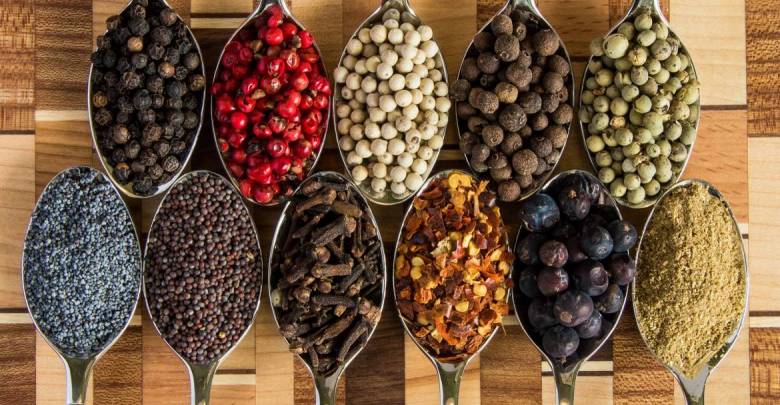What better time to get the kids to ditch some of the unhealthier food choices of the summer and start building a better relationship with food, than the beginning of a new school year? It is also a great chance to start developing healthy eating habits. Nutrition plays a vital role in supporting a child’s physical, emotional and cognitive development, so ensuring the right amounts of vitamins, minerals and fatty acids is fundamental for kids of all ages to achieve their potential.
Healthy eating starts early
The link between food and health is well-documented. The food your children eats now will undoubtedly influence their health later in life, since numerous studies shows that establishing healthy eating habits as a child encourages healthy eating as an adult.
As children grow and become independent they start making their own food choices. Whether these include Nutella, chicken nuggets and coke is heavily influenced by the habits they establish now.

Eating disorders are on the rise
Adolescence is a time when a child’s relationship with food can be at risk. The media is full of contradictory and confusing messages about food and dieting that are often superficial and wrong.
Adolescents worry about their weight due to insecurities about self-image. Girls especially, often restrict their eating to deal with the growing pressure of being thin. This is detrimental to their health as a lack of nutrients interferes with normal bodily functions such as menstruation. At the same time, the rate of obesity amongst children and adolescents continues to climb, putting them at risk of heart disease, diabetes, underachievement and low self-esteem.
Childhood anxiety has risen drastically
Children have all their activities planned for them and have little freedom to express themselves. Stress pushes them towards sugary comfort foods that blunt anxious feelings and make them feel temporarily better.
Picky eaters galore
Children have become selective, not just about fruit and veggies, but also protein sources. Some have learned that being “picky” allows them to get the foods they want. Waiting for the problem to resolve itself can cause nutrient deficiencies or worsen the dynamic at the dinner table.

Too much junk food
Over consumption of sugary, salty processed foods and not enough fruits, vegetables and whole foods means that many young people often don’t get adequate amounts of calcium, zinc and iron, essential for strong bones, proper growth and concentration. Drinks loaded with artificial additives and sugar contribute to ADHD, hyperactivity and digestive issues. Food intolerances to dairy and gluten may be triggering mood swings and aggression.
Common Nutritional Deficiencies in Children
Iron: Children need iron to make hemoglobin, a protein that carries oxygen from their lungs to the rest of their body. Without enough iron, children can develop anemia which can lead to lethargy and poor cognitive functioning. Adolescence is a time of increased iron needs because of the expansion of blood volume and increases in muscle mass. Teenage boys, especially those who are athletic, are at risk during the rapid growth of puberty, but iron deficiency affects girls more often because their bodies can’t store as much iron and they lose blood during menstruation. Good sources include sustainable red meat, pork, poultry, seafood, beans, peas, lentils, dark green leafy vegetables, dried fruits, iron-fortified cereals, breads and pastas.
Calcium: Widely recognized as the culprit behind a child’s poor development of strong teeth and bones, calcium intake also impacts muscle and heart function and the nervous system. Children have higher calcium needs than the rest of the family. Milk and dairy products contain plenty of calcium, but there are many alternatives for vegetarians and those with lactose concerns. Organic dark leafy green vegetables, soy and tofu, nuts (almond butter), seeds, and fortified cereals are all good sources.
Vitamin D: Essential for the absorption of calcium and thus optimal bone growth, as well as mental and immune health. Deficiencies are more common in darker-skinned children and those that have limited exposure to sunlight. Children can obtain some vitamin D by eating oily fish (salmon and sardines), eggs and sustainable foods fortified with vitamin D such as certain dairy products, soy milk, eggs and cereals. Since food is not a good source of vitamin D, I recommend supplements, especially in the winter.
Zinc: Essential to childhood growth, digestion, sex hormone development, and a strong immunity. Zinc is especially important during puberty because it helps cells divide, which happens quickly and frequently during puberty. A deficiency can negatively impact everything from hair, skin, and nails to cognitive functioning and the height of your child. Good sources are sesame seeds, pumpkin seeds, cashews, peanuts, seafood, meat, cooked beans, peas and lentils. Other options include grains such as amaranth, oats, along with some fruits and vegetables such as avocado, peas, and berries.
Omega 3 Fatty Acids: Vital for a child’s development, most children (and adults) don’t get enough of these healthy fats. Runny noses, ear infections, constipation, excessive thirst or slow healing wounds are good indicators that your child needs more omega 3’s in their diet. Children with ADHD, allergies, asthma, hay fever, eczema, skin rashes and digestive problems are also likely to be deficient in EFAs. Nuts, seeds, organic free range eggs and oily fish are good food sources. I advise taking a supplement too.

Quick Learners
Fortunately, children enjoy learning about food, as the main way they learn the difference between nutritious foods and unhealthy foods is through school and food preparation at home. Knowing where food comes from, how it’s grown, and how food production affects their environment helps them take responsibility for their health and increases their confidence in their ability to make healthier food choices. It’s up to us to encourage our children to develop healthy eating habits that last!
Here’s one of great Back to School smoothies. Great for a healthy breakfast or after school snack!
Choconutty Smoothie (serves 2)
1 ripe banana (frozen if possible)
½ avocado
350 ml non-dairy milk (cold)
1 tsp milled flax
1 tsp vanilla essence
1 tsp raw almond butter
1 tbs raw cacao
Use a high power or hand blender for this one. Add all the ingredients to the container and blend until smooth.
You can try other milks and maybe play around with any additional sweetness you need, raw honey, vanilla, raw agave, pure maple syrup, stevia can all be added.
You can add some maca powder or hemp protein for an extra boost.
If you don’t have nut butter soak about 6 white almonds the night before and add to the ingredients.
Try adding other soft fruits, mango, melon, figs, apricots, ripe pears!








